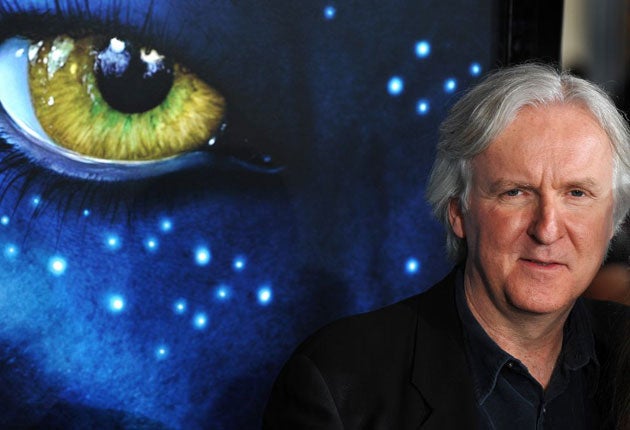Nasa grounds Cameron's pricy space mission

When one of his Hollywood blockbusters runs over budget or behind schedule, as they almost always do, James Cameron tends to confound the naysayers by eventually producing a hugely lucrative commercial hit. But real life isn't always so forgiving.
The Oscar-winning director of Titanic and Avatar has suffered the indignity of being told that Nasa has scrapped plans to equip its new Mars rover, Curiosity, with two of his state-of-the-art 3D cameras. The space agency said it was insufficiently confident that his devices would be working in time for the mission's scheduled launch this summer.
Cameron had embarked on the project with a San Diego-based tech firm, Malin Space Science Systems, several years ago. The idea was to attach a pair of 3D zoom-lens devices, similar to ones his staff developed for Avatar, to a boom extending from the roof of the buggy-sized rover, which is due to touch down on the Red Planet in 2012.
Provided they owned a set of 3D spectacles, the public would then have been able to join Nasa scientists in viewing cinema-quality footage. But now that Cameron's big idea has been vetoed, Mars aficionados will have to make do with images from two relatively outmoded fixed-lens cameras, which were developed with the filmmaker's help several years ago.
"While Curiosity won't benefit from the 3D motion imaging that the zooms enable, I'm certain that this technology will play an important role in future missions," Cameron said in a statement released over the weekend.
The decision to pass over Cameron's latest innovation reflects an understandable reluctance by Nasa bosses to take risks with the Mars exploration project. It is, after all, already costing some $2.5 billion (£1.6bn) at a time when the agency, in common with many publicly-funded organisations, is facing budget cuts.
Scientists at the jet propulsion laboratory in Pasadena, California, where Curiosity is under construction, have already spent hundreds of millions of dollars. Their six-wheeled rover can travel further, and over rougher terrain, than any device to have previously visited Mars. The mission aims to establish whether the planet can support life, and whether any forms of life have previously existed there.
To that end, Curiosity will carry a range of meteorological devices that can monitor weather conditions, along with a laser that can determine the atomic make-up of rocks or patches of soil that it is fired at. It also has equipment which, with a following wind, will allow it to return to Earth some time in 2014 with a selection of soil and rock samples.
Cameron has had an on-off relationship with the project. In 2007, Nasa decided to scale back plans to use his 3D-zoom technology on Curiosity because they were already running behind schedule and spending far more than had been expected. However, they invited the filmmaker back on board last April.
At the time, Avatar had just become the most lucrative film in history, and 3D movies were all the rage. News reports about the U-turn said that it came despite Cameron personally lobbying Charles Bolden, the Nasa administrator, stressing how his cameras could help the public "connect" with the mission.
In a statement, John Grotzinger, one of the lead scientists working on Curiosity, said that they had run out of time to properly road-test Cameron's device. "The possibility for a zoom-camera upgrade was very much worth pursuing, but time became too short for the levels of testing that would be needed for them to confidently replace the existing cameras," he said.
Join our commenting forum
Join thought-provoking conversations, follow other Independent readers and see their replies
Comments
Bookmark popover
Removed from bookmarks